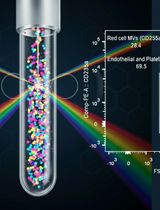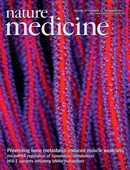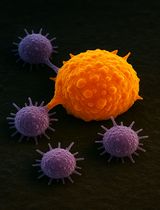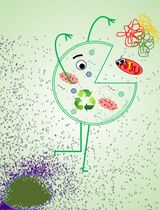- EN - English
- CN - 中文
Adhesion Assay for Murine Bone Marrow Hematopoietic Stem Cells
鼠骨髓造血干细胞粘附测定
发布: 2017年02月20日第7卷第4期 DOI: 10.21769/BioProtoc.2135 浏览次数: 12258
评审: Xiujun FanVivien Jane Coulson-ThomasAnonymous reviewer(s)

相关实验方案

外周血中细胞外囊泡的分离与分析方法:红细胞、内皮细胞及血小板来源的细胞外囊泡
Bhawani Yasassri Alvitigala [...] Lallindra Viranjan Gooneratne
2025年11月05日 1329 阅读
Abstract
Hematopoietic stem cells (HSCs) are defined by their functional abilities to self-renew and to give rise to all mature blood and immune cell types throughout life. Most HSCs are retained in a non-motile quiescent state within a specialized protective microenvironment in the bone marrow (BM) termed the niche. HSCs are typically distinguished from other adult stem cells by their motility capacity. Movement of HSCs across the physical barrier of the marrow extracellular matrix and blood vessel endothelial cells is facilitated by suppression of adhesion interactions, which are essential to preserve the stem cells retained within their BM niches. Importantly, homing of HSCs to the BM following clinical transplantation is a crucial first step for the repopulation of ablated BM as in the case of curative treatment strategies for hematologic malignancies. The homing process ends with selective access and anchorage of HSCs to their specialized niches within the BM. Adhesion molecules are targets to either enhance homing in cases of stem cell transplantation or reduce BM retention to harvest mobilized HSCs from the blood of matched donors. A major adhesion protein which is functionally expressed on HSCs and is involved in their homing and retention is the integrin alpha4beta1 (Very late antigen-4; VLA4). In this protocol we introduce an adhesion assay optimized for VLA4 expressing murine bone marrow stem cells. This assay quantifies adherent HSCs by flow cytometry with HSC enriching cell surface markers subsequent to the isolation of VLA4 expressing adherent cells.
Keywords: Very late antigen 4 (极晚期抗原4)Background
HSCs are mostly retained in the BM and are regulated by adhesive interactions with their microenvironment, the niche. In this way HSCs are kept in a non-motile quiescent state which protects them from DNA damaging agents (Boulais and Frenette, 2015; Mendelson and Frenette, 2014; Miyamoto et al., 2011; Morrison and Scadden, 2014). The defining properties of HSCs are their functional ability to durably repopulate the irradiated BM of transplanted recipients, which requires their homing, self-renewal and developmental potential (Gur-Cohen et al., 2016). Since adhesion gives rise to activation of intracellular signaling pathways, the type of interaction can mirror the developmental state and behavior of the cells (Sugiyama et al., 2006). Adhesion assays are methods to distinguish between adhesive and non-adhesive cells. In this protocol we introduce a cell adhesion assay under static conditions that separates VLA4 expressing adhesive cells from non-adhesive cells, which are quantified by FACS analysis.
In mouse, hematopoietic stem and progenitor cells (HSPCs) are enriched in a population that lacks lineage markers (Lin; CD8a, CD4, GR1, B220, TER-119, CD11b), and expresses c-Kit (K) and Sca-1 (S). Hence, these cells are also called Lin- Sca-1+ c-Kit+ (LSK) cells (Adolfsson et al., 2001; Okada et al., 1991; Spangrude et al., 1988). EPCR (endothelial protein C receptor) has been identified as a stem cell marker also in various other tissues (Balazs et al., 2006; Iwasaki et al., 2010; Kent et al., 2009; Ramalho-Santos et al., 2002; Wang and Gerdes, 2015).
Adhesion molecules play a major role in the retention and egress of these HSCs in the BM and to the blood circulation. VLA4 is a receptor for both fibronectin and VCAM-1 and is expressed by most leukocytes, as well as by some non-hematopoietic cells (Hemler et al., 1990), while its expression is higher on murine BM EPCR+ LT-HSCs as compared to EPCR negative progenitor cells and circulating LT-HSC (Gur-Cohen et al., 2015). It has long been proposed that VLA4 expression by LT-HSCs might be important for binding and detachment of stem cells within the human BM microenvironment. Inhibition of VLA4 or VCAM-1 binding by neutralizing antibodies causes mobilization of HSPCs from the BM to the blood circulation of mice and primates (Craddock et al., 1997; Papayannopoulou et al., 1995) which is consistent with the notion that VLA4 is crucial for CXCL12/CXCR4-mediated LT-HSC quiescent retention in the BM (Papayannopoulou et al., 1995; Papayannopoulou and Scadden, 2008). In addition to HSPC BM retention, VLA4 is also essential for murine HSPC BM homing (Papayannopoulou and Craddock, 1997). VLA4 possesses different conformations that correlate with its affinity states (Alon et al., 1995; Chen et al., 1999; Feigelson et al., 2001) which are influenced by divalent cations and inside-out signaling (Chigaev et al., 2003; Chigaev et al., 2011). The majority of VLA4 affinity inside- out signaling is mediated by G-protein coupled receptors (Laudanna et al., 2002; Chigaev et al., 2008; Arnaout et al., 2007). Furthermore, elevation of intracellular nitric oxide (NO) was shown to cause cGMP-mediated inhibition of VLA4 affinity (Chigaev et al., 2011). We have previously shown two different pathways, the aPC-EPCR-PAR1 and the thrombin-PAR1 axis, which regulate the NO level up and down, respectively. Thereby, these pathways influence a number of intracellular molecules including Cdc42, CXCR4 and VLA4 leading to retention or mobilization of HSPCs (Gur-Cohen et al., 2015). As described by Gur-Cohen et al. (2015), we herein propose the VLA4 mediated adhesion assay for EPCR+ stem cells as a powerful tool to predict LT-HSC retention potential to their bone marrow niches.
Materials and Reagents
- Tissue culture 6-well plates (Corning, Costar®, catalog number: 3516 )
- NuncTM 8.8 cm2 Petri dish (Thermo Fisher Scientific, Thermo ScientificTM, catalog number: 153066 )
- 1 ml slip tip Sub-Q syringe with disposable 26 G x 5/8 inch needle (BD, catalog number: 309597 )
- Autoclaved pipet tips:
- FACS tubes (Corning, Falcon®, model: 352054 )
- Sterilized 40 µm pore-sized nylon mesh (Sinun Tech, catalog number: Plymer Screends ) (see Recipes)
- Mice
- Fibronectin (Sigma-Aldrich, catalog number: F0895 )
- Human CXCL12 (human SDF-1 alpha) (reprokineTM, catalog number: RKP48061 ) or (PeproTech, Rocky Hill, NJ, USA)
- BSA (Sigma-Aldrich, catalog number: A9647 )
- LymphoprepTM Ficoll (STEMCELL Technologies, catalog number: 07861 )
- Antibodies:
- EPCR PE (Affymetrix, eBioscience, catalog number: 12-2012-82 ) or EPCR PerCP-eFluor 710(Affymetrix, eBioscience, catalog number: 46-2012-80 ) or EPCR Biotin (Affymetrix, eBioscience, catalog number: 13-2012-82 ) combined with streptavidin-PE (BioLegend, catalog number: 405203 )
- Sca-1 PE (BioLegend, catalog number: 108108 ) or Sca-1 PE/Cy7 (BioLegend, catalog number: 108114
- c-Kit APC (BioLegend, catalog number: 105812 )
- Lineage antibodies
Note: This is a set of antibodies that target the antigens i-vi listed below which are cell lineage markers. In mice these markers do not occur on stem and progenitor cells.- CD8a FITC (BioLegend, catalog number: 100706 )
- CD4 FITC (BioLegend, catalog number: 100406 )
- GR1 FITC (BioLegend, catalog number: 108406 )
- B220 FITC (BioLegend, catalog number: 103206 )
- TER-119 FITC (BioLegend, catalog number: 116206 )
- CD11b FITC(BioLegend, catalog number: 101206 )
- Or Lineage Cocktail-Biotin (Miltenyi Biotec, catalog number: 130-092-613 ) combined with streptavidin-FITC (BioLegend; catalog number: 405202 )
Note: The combination of fluorophores used for the experiment needs to be adjusted according to the experimental demands.
- CD8a FITC (BioLegend, catalog number: 100706 )
- EPCR PE (Affymetrix, eBioscience, catalog number: 12-2012-82 ) or EPCR PerCP-eFluor 710(Affymetrix, eBioscience, catalog number: 46-2012-80 ) or EPCR Biotin (Affymetrix, eBioscience, catalog number: 13-2012-82 ) combined with streptavidin-PE (BioLegend, catalog number: 405203 )
- 1x Dulbecco’s phosphate buffered saline without calcium and magnesium (PBS-/-) (generated from 10x PBS, see Recipes) (Biological Industries, catalog number: 02-023-5A )
- Roswell park memorial institute (RPMI) 1640 medium ([+] 300 mg/L L-glutamine, [+] 25 mM HEPES) (Thermo Fisher Scientific, GibcoTM, catalog number: 52400025 )
- Fetal bovine serum (FBS) (Thermo Fisher Scientific, GibcoTM, catalog number: 12657-029 )
- Penicillin-streptomycin (Pen-Strep) solution (Biological Industries, catalog number: 03-031-1B )
- L-glutamine solution (Biological Industries, catalog number: 03-020-1B )
- Gentian violet (Sigma-Aldrich, catalog number: G2039 )
- Acetic acid (Sigma-Aldrich, catalog number: ARK2183 )
- 0.1 M sodium azide solution (Sigma-Aldrich, catalog number: 0 8591 )
- Acetone (Sigma-Aldrich, catalog number: 40289 )
Note: This product has been discontinued. - Ethanol (Sigma-Aldrich, catalog number: 24103 )
Note: This product has been discontinued. - Cell dissociation solution (Sigma-Aldrich, catalog number: C5914 )
- ddH2O
- Coating solution (see Recipes)
- Blocking solution with 2% (m/v) BSA (see Recipes)
- Complete RPMI medium (see Recipes)
- Turk’s solution (see Recipes)
- FACS buffer (see Recipes)
Equipment
- HeracellTM 150i CO2 incubator (Thermo Fisher Scientific, Thermo ScientificTM, model: 150i CO2 incubator)
- Autoclave
- Scissors
- Forceps
- Refrigerator (4° C)
- Centrifuge (Eppendorf, model: 5810R )
- Centrifuge swing-bucket rotor A-462 4 x 250 ml rectangular buckets (Eppendorf, catalog number: 5810709008 )
- Adapters (Eppendorf, catalog number: 5810752000 )
- Finnpipette model 4500 single channel pipette:
- 0.5-10 μl (Thermo Fisher Scientific, Thermo Scientific, catalog number: FA-10R )
- 5-40 μl (Thermo Fisher Scientific, Thermo Scientific, catalog number: FA-40R )
- 20-200 μl (Thermo Fisher Scientific, Thermo Scientific, catalog number: FA-200R )
- 100-1,000 μl (Thermo Fisher Scientific, Thermo Scientific, catalog number: FA-1000R )
- Inverted light microscope (Olympus, model: CHK2-F-GS )
Note: This product has been discontinued by the manufacturer. - Counting chamber/hemocytometer (Reichert Bright-Line) (Sigma-AIdrich, Bright-LineTM, model: Z359629 )
- Flow cytometer (model optional):
- MACSQuant VYB instrument (Miltenyi Biotec, model: 130096116 )
- FACSCalibur instrument (BD)
- FACS LSRII instrument (with all four fixed-aligned lasers) (BD)
- MACSQuant VYB instrument (Miltenyi Biotec, model: 130096116 )
Software
- CellQuest software
- FACSDiva software
- FlowJo (Tree Star or V10) or MacsQuant
Procedure
文章信息
版权信息
© 2017 The Authors; exclusive licensee Bio-protocol LLC.
如何引用
Avci, S., Gur-Cohen, S., Avemaria, F. and Lapidot, T. (2017). Adhesion Assay for Murine Bone Marrow Hematopoietic Stem Cells. Bio-protocol 7(4): e2135. DOI: 10.21769/BioProtoc.2135.
分类
干细胞 > 成体干细胞 > 造血干细胞
细胞生物学 > 细胞运动 > 细胞粘附
细胞生物学 > 基于细胞的分析方法 > 流式细胞术
您对这篇实验方法有问题吗?
在此处发布您的问题,我们将邀请本文作者来回答。同时,我们会将您的问题发布到Bio-protocol Exchange,以便寻求社区成员的帮助。
Share
Bluesky
X
Copy link










